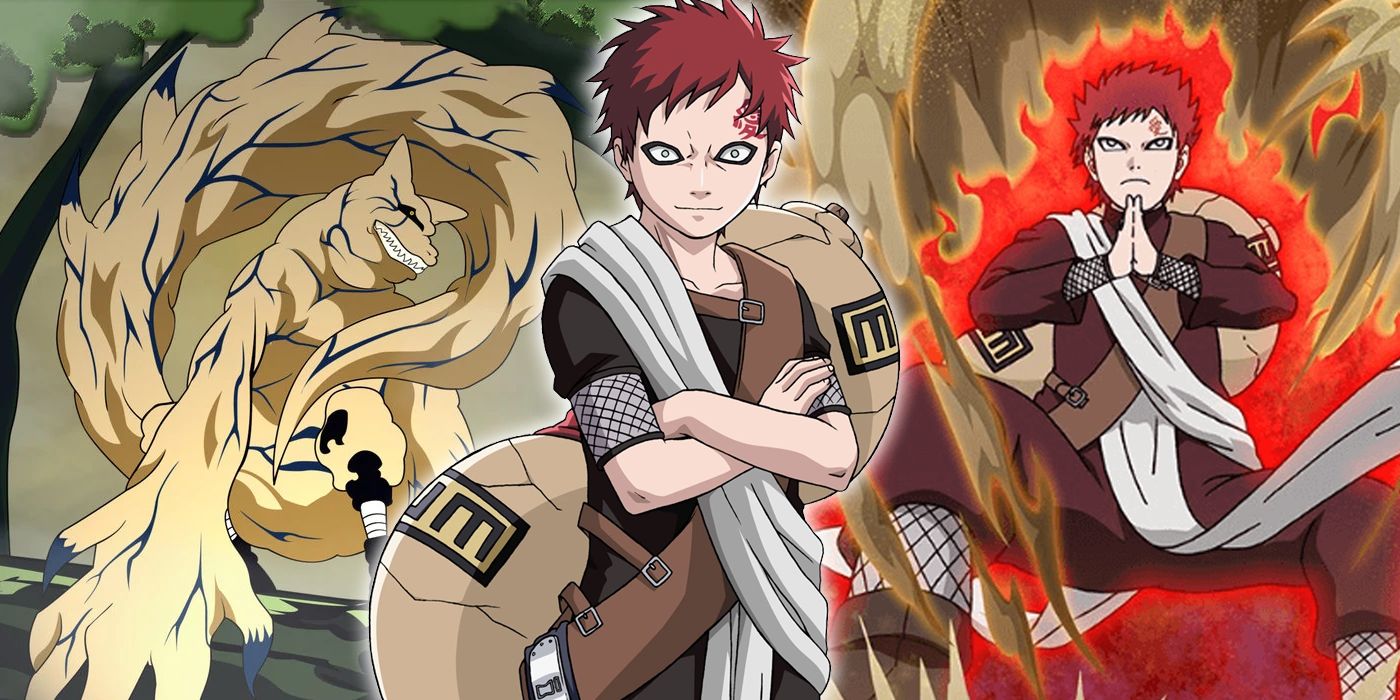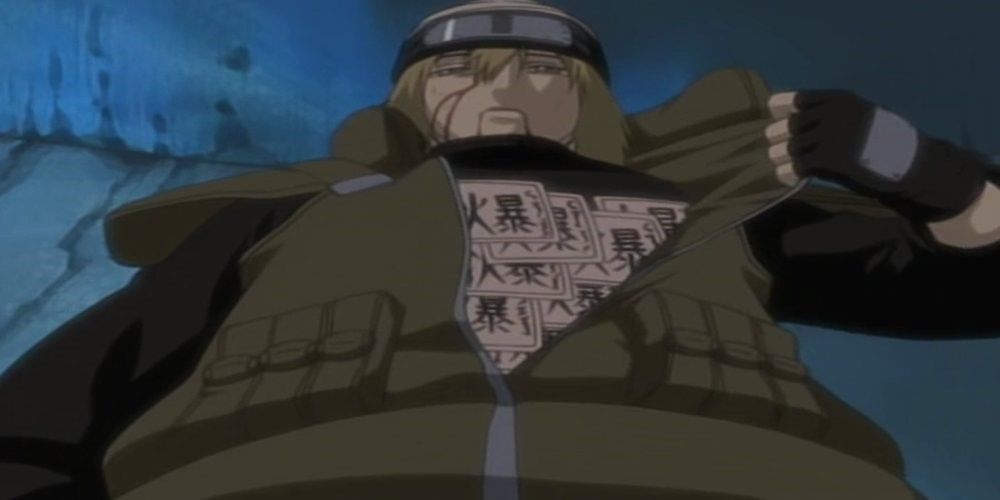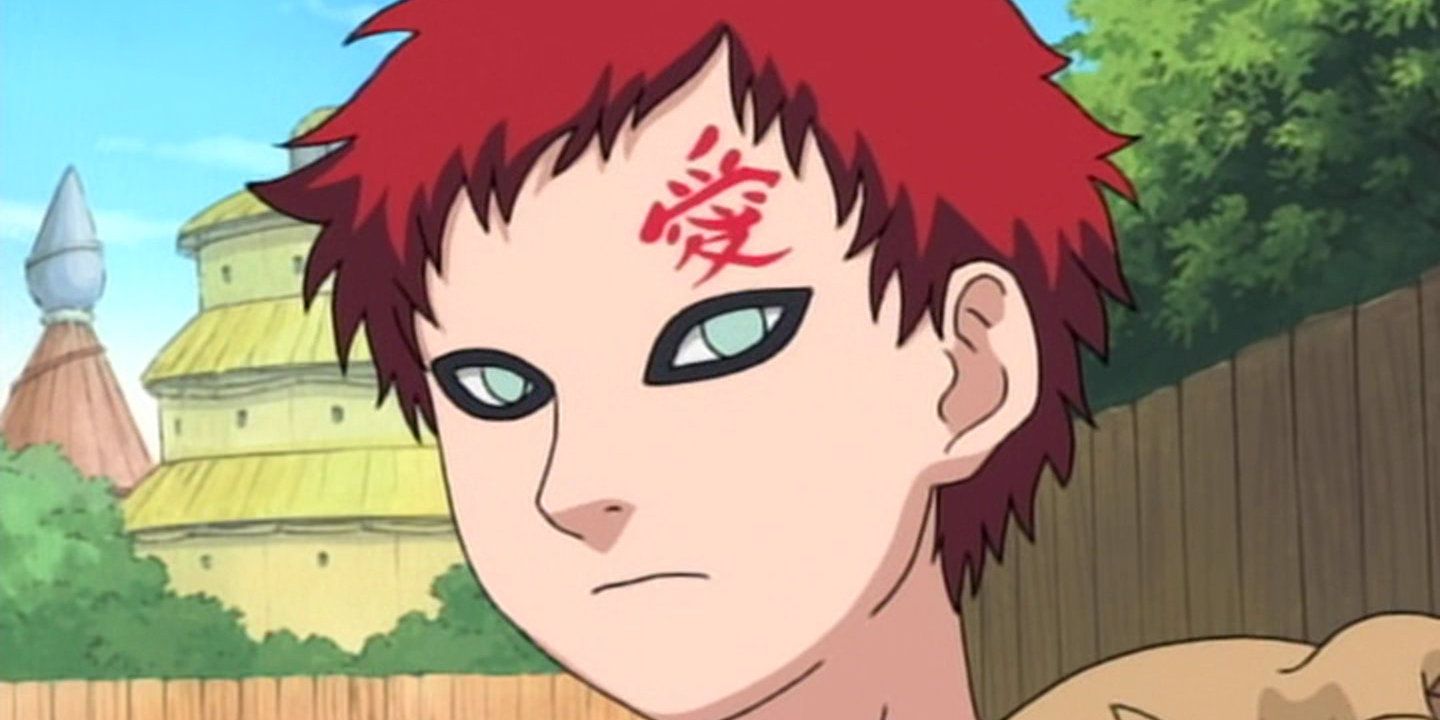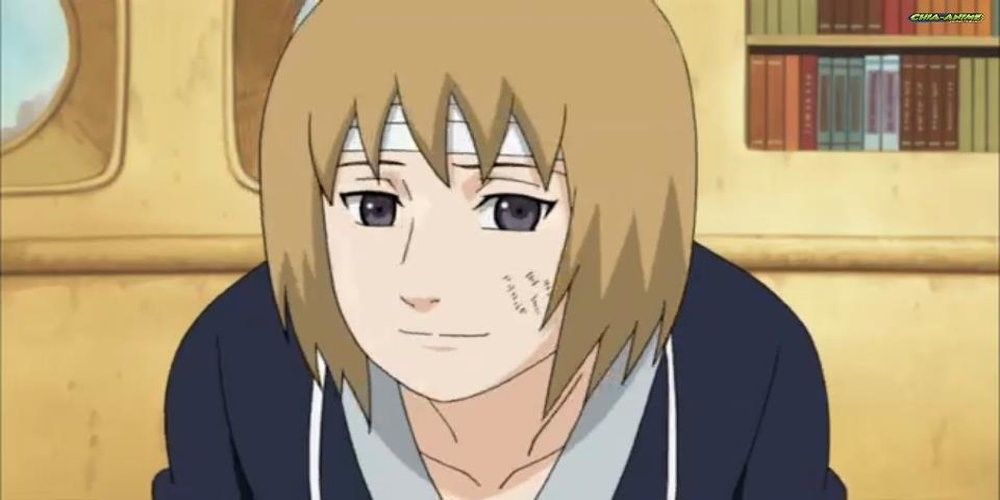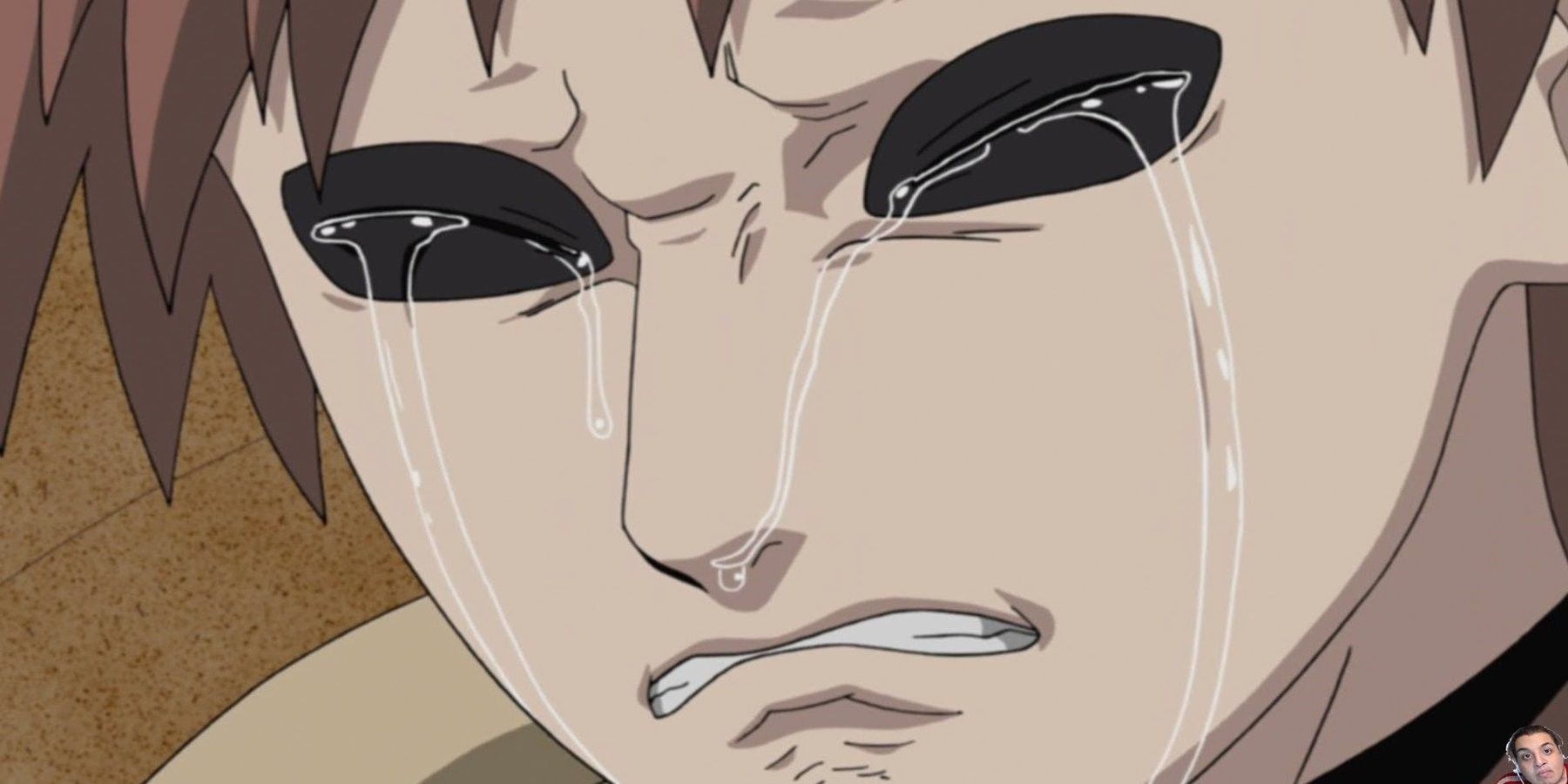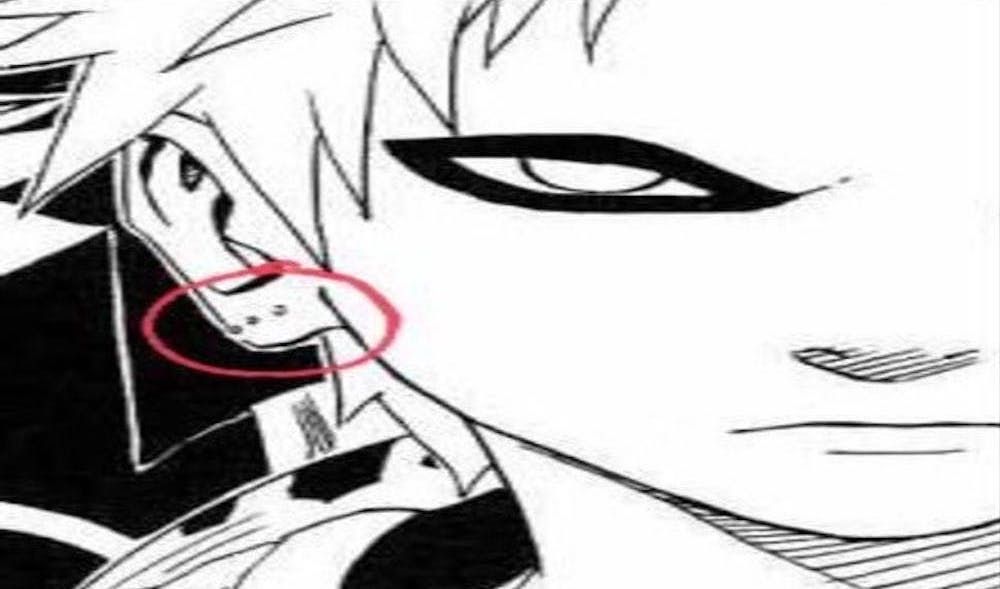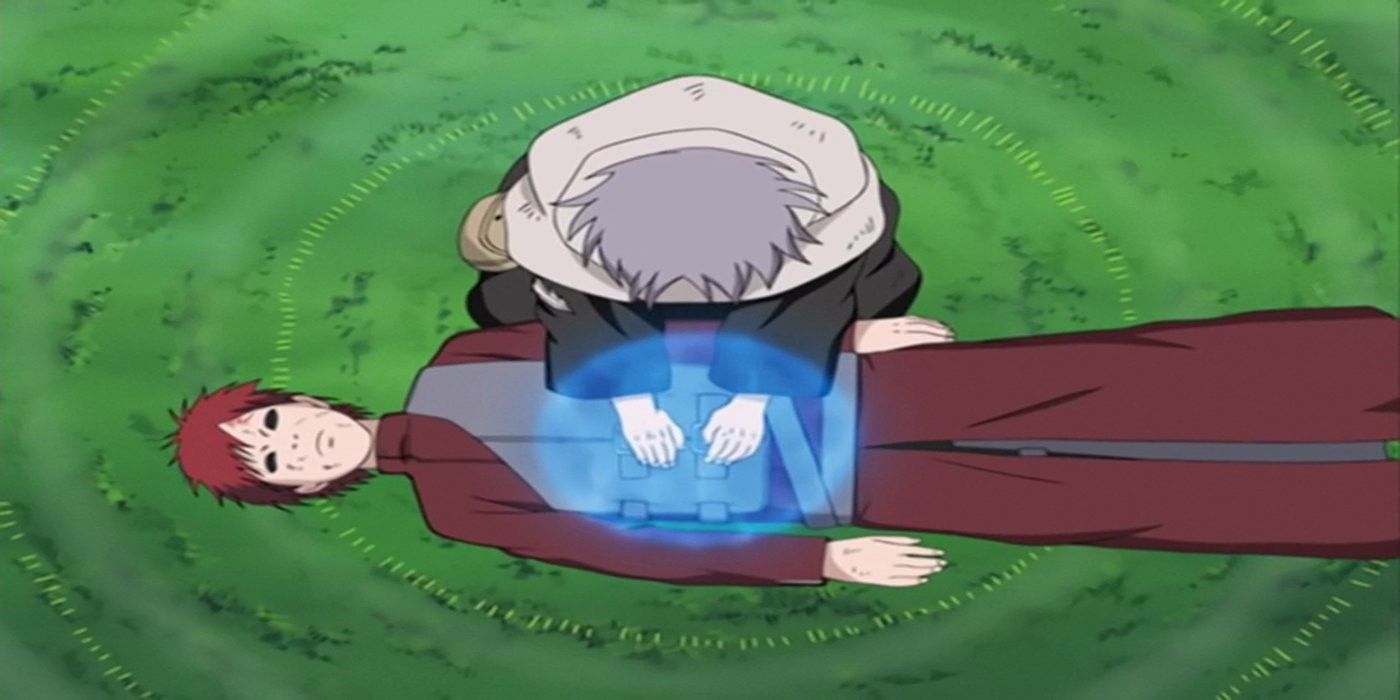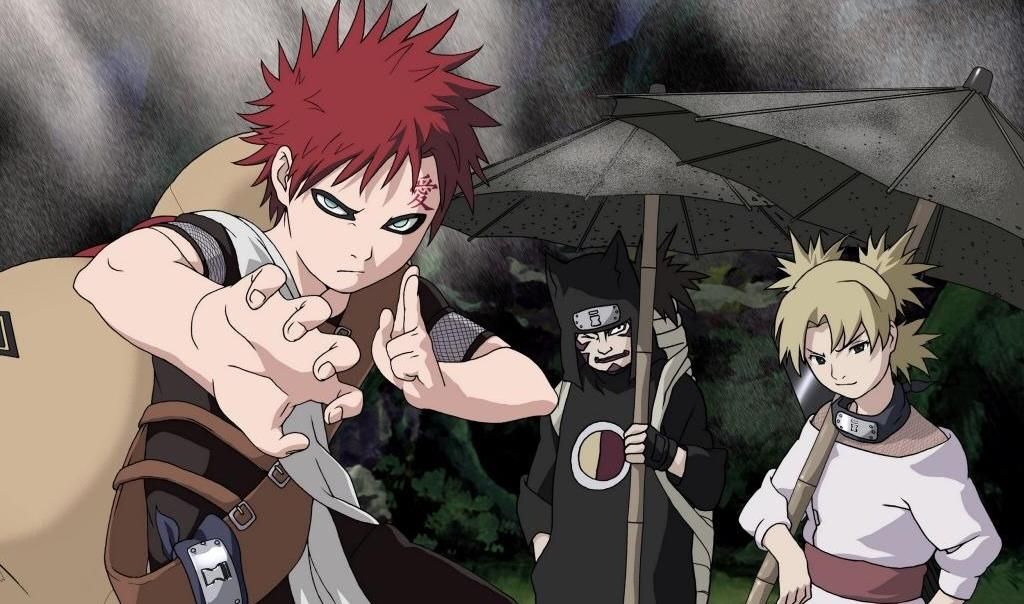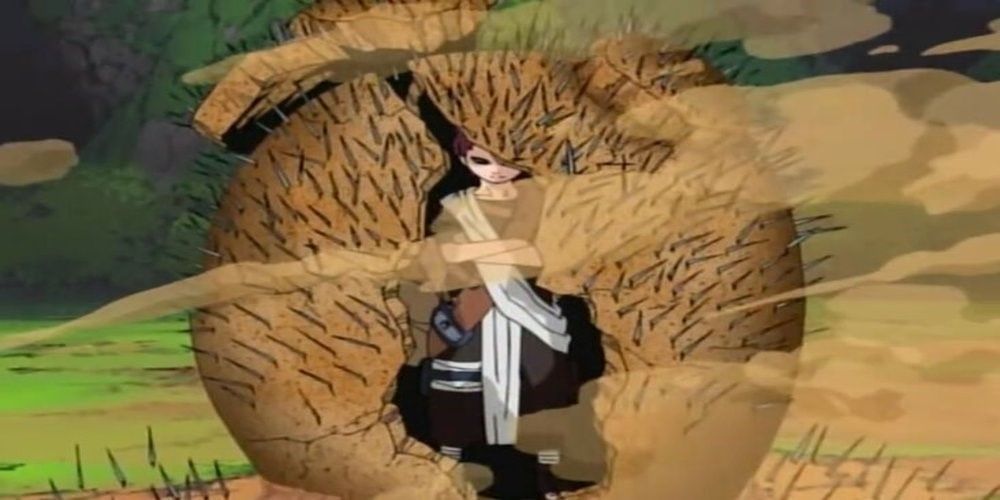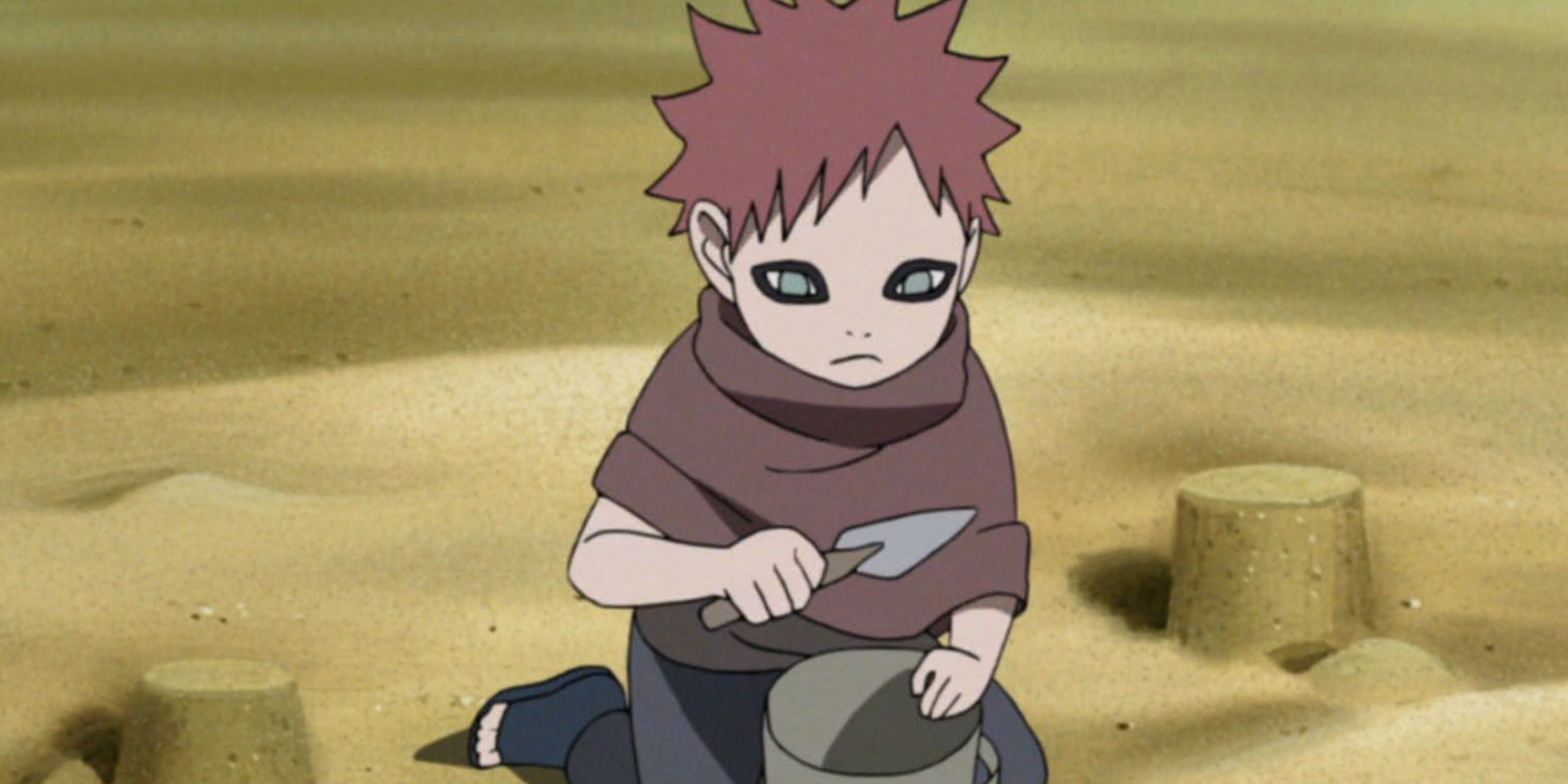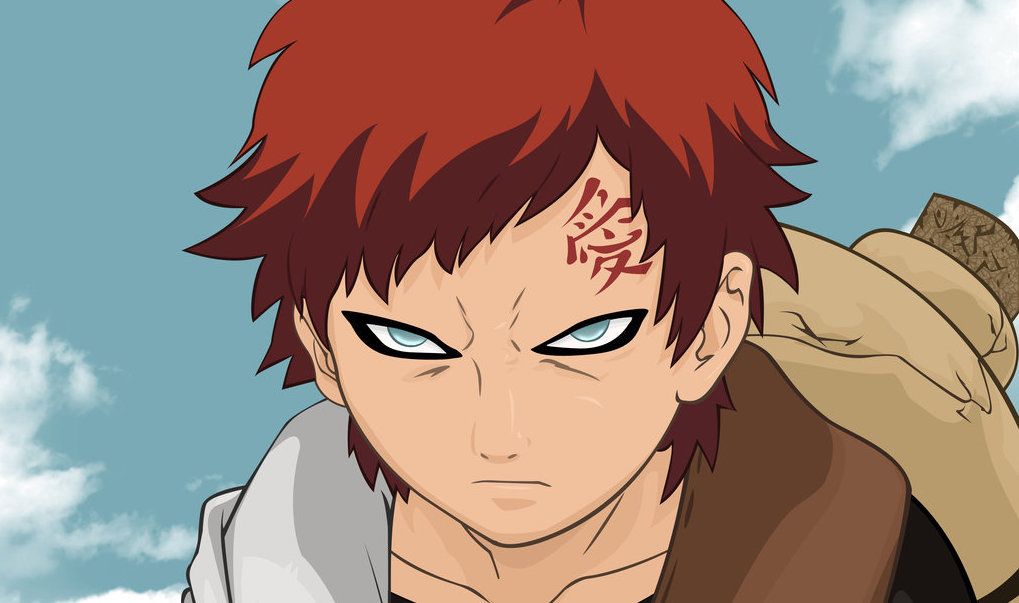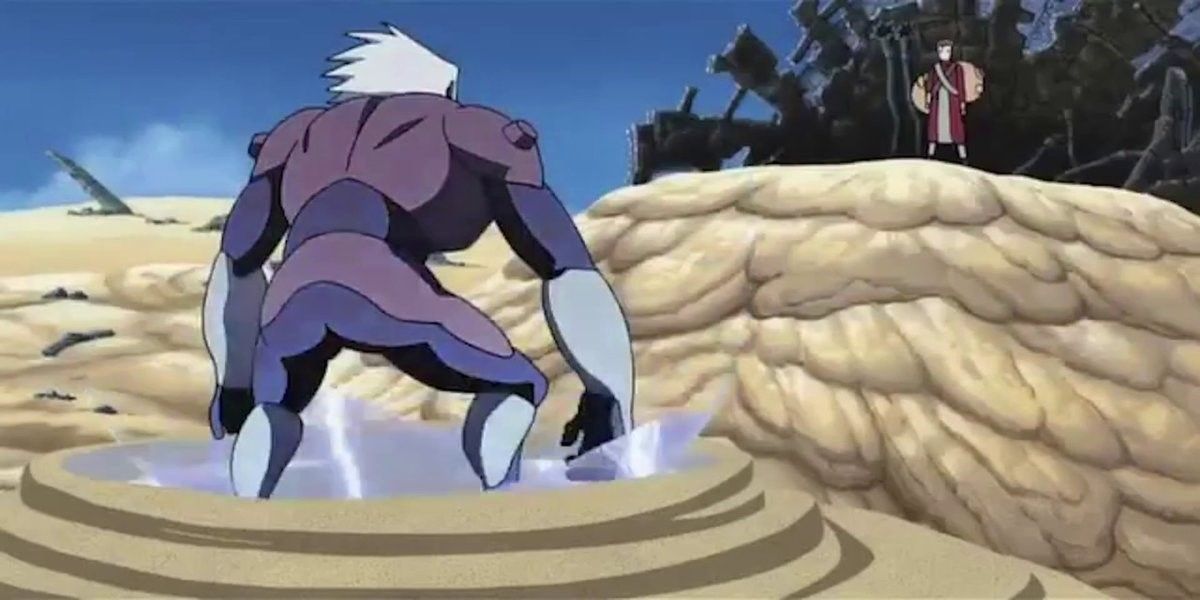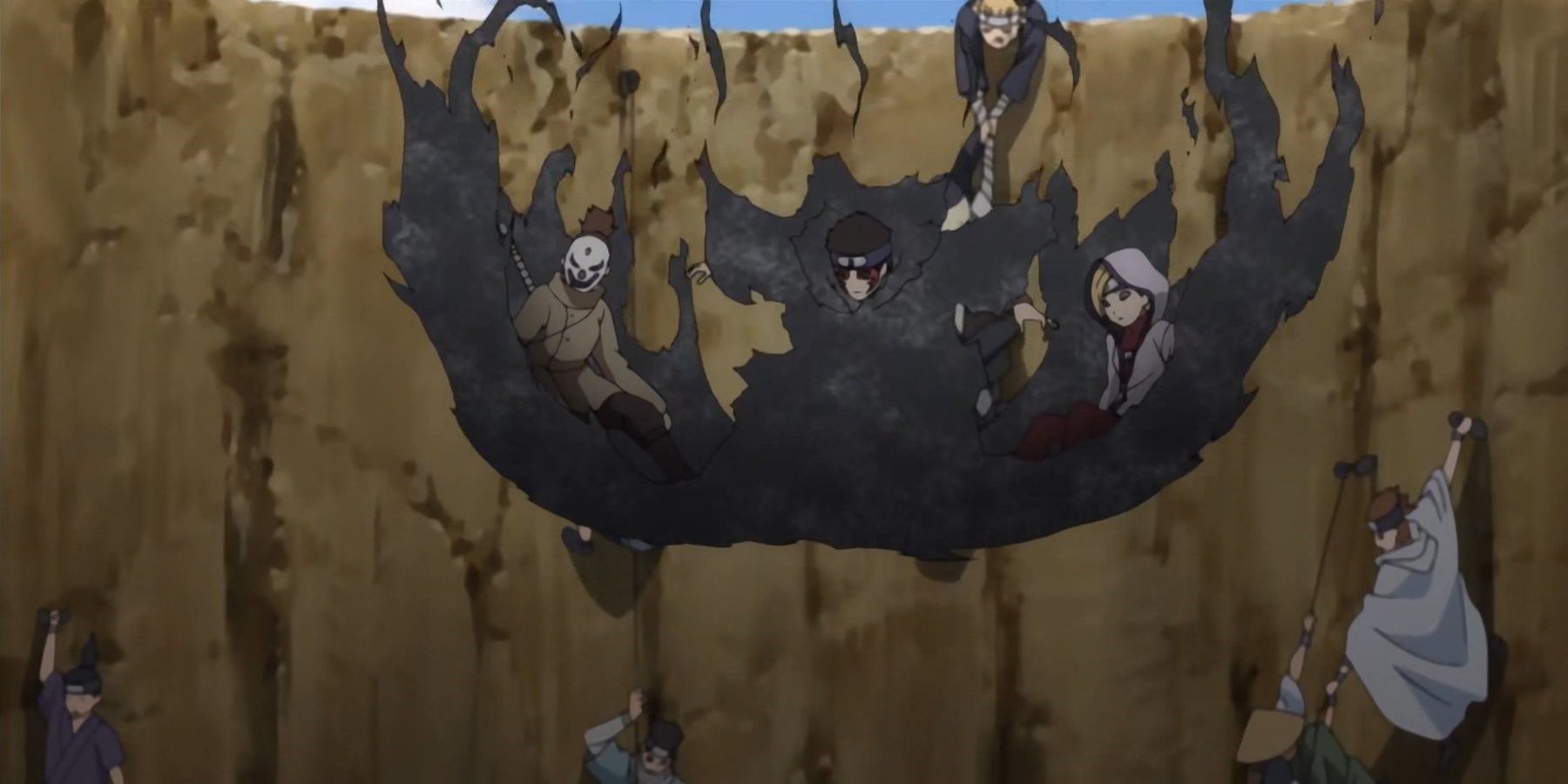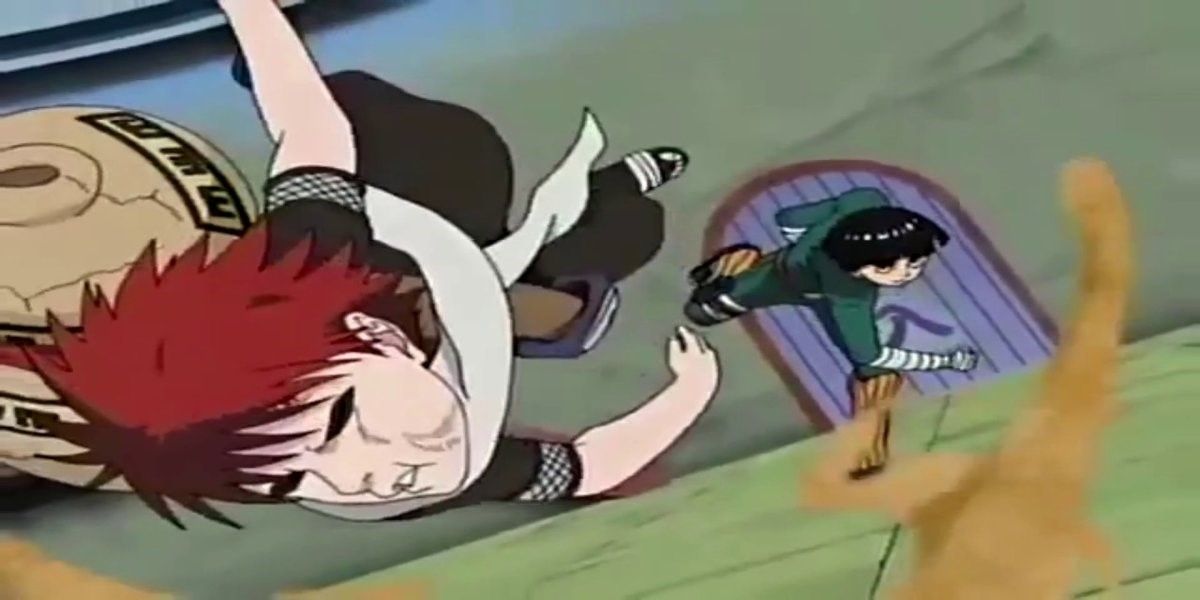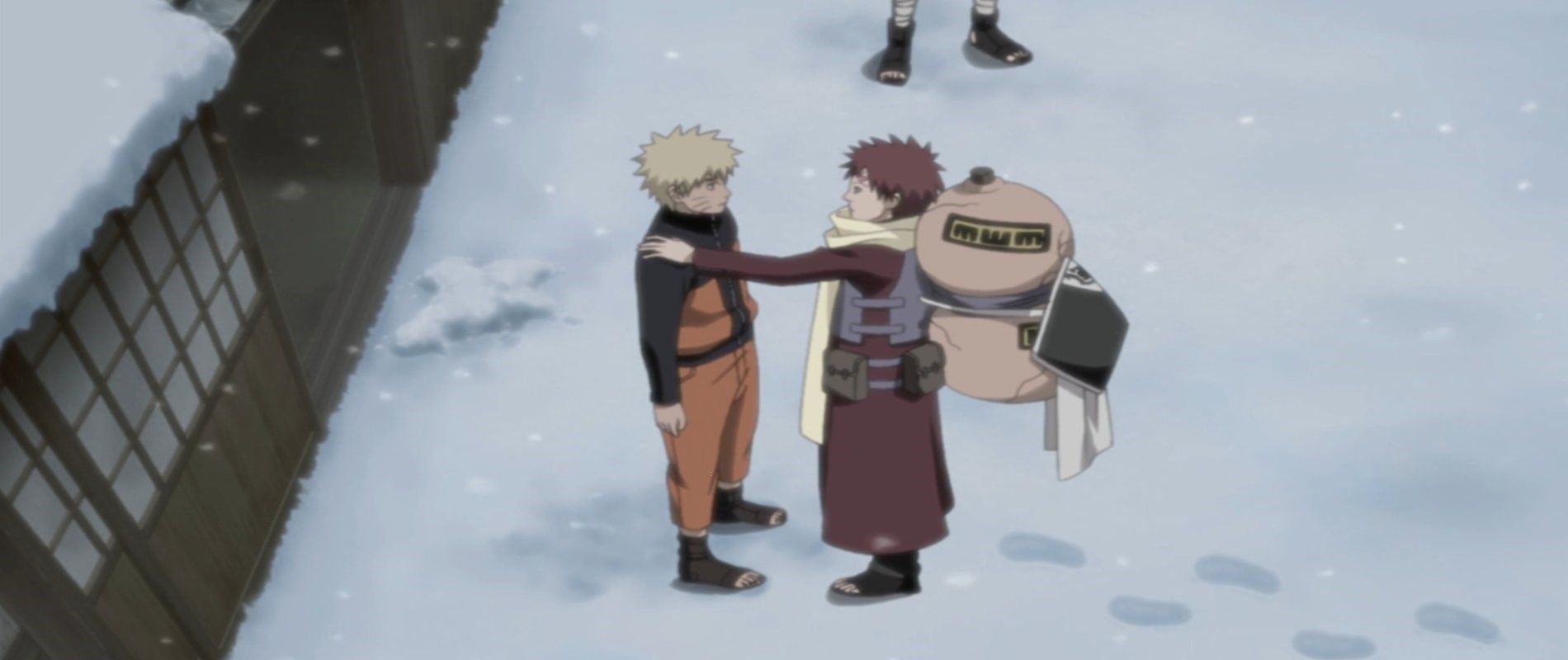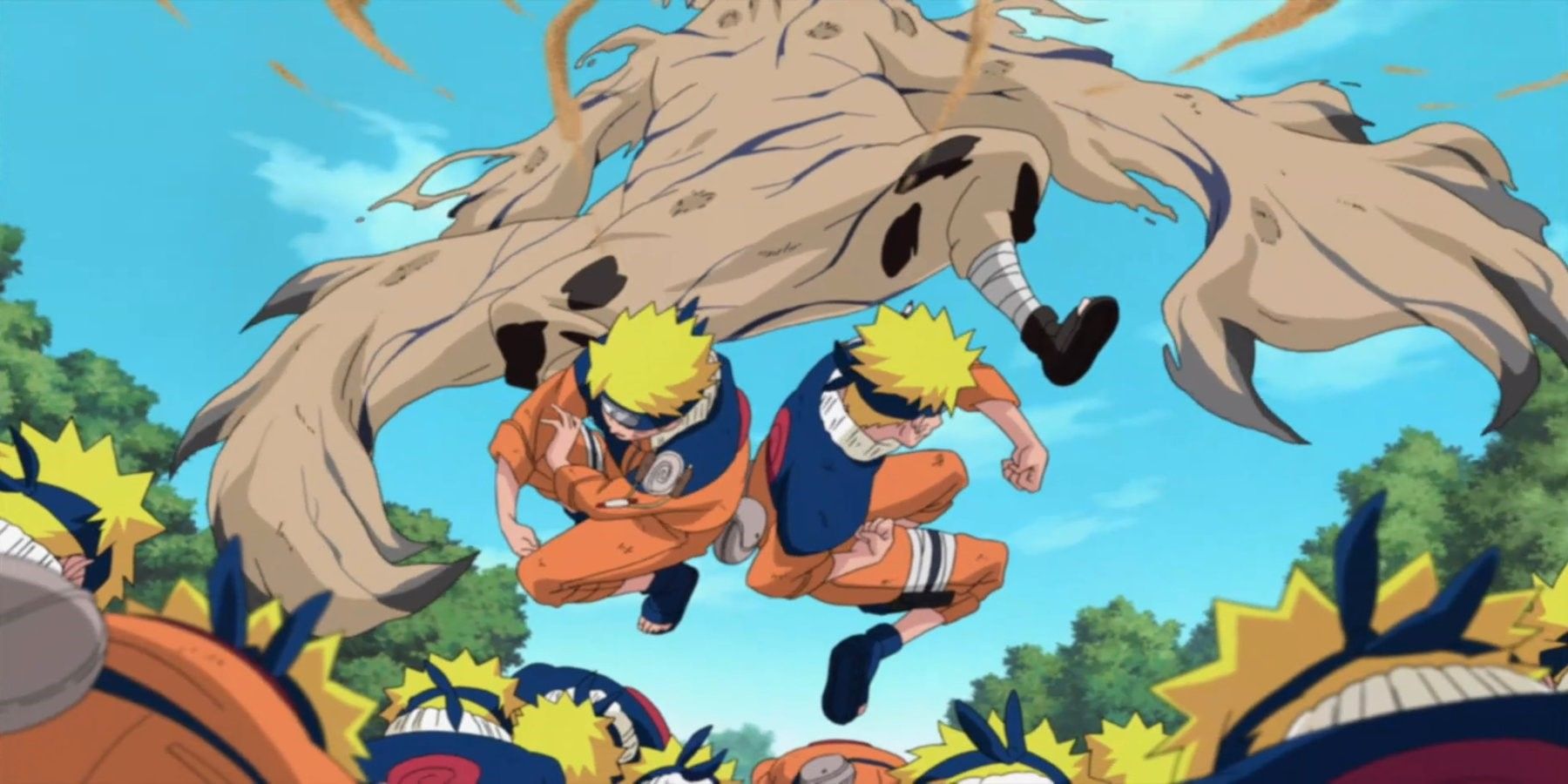The Naruto franchise is one of most popular mangas in the world, selling over 220 million copies since 1999. Much of its success comes from creator Masashi Kishimoto’s ability to combine a fictional world full of awesome ninja fighting with relatable characters who have experienced tragedy and loss.
Gaara is one such character, earning instant popularity from Naruto fans because of his power and heartbreaking childhood. He would first appear as an insane and sadistic evil character who was the foil to the series' protagonist, Naruto Uzumaki.
Gaara’s motto started off as “love for oneself” (自愛, jiai). He explains this to Naruto by saying: “I am a relic they want to get rid of, so why do I exist and live? In order to exist, you need a purpose. To exist for no reason is the same as being dead… Then I came to the conclusion that I would love only myself and fight for only myself.”
In one of the greatest redemption arcs of the series, Naruto would help Gaara to change the way he viewed life ─ leading him to adapt the mottos of “affection” (慈愛) and “future” (未来) instead.
In honor of the Naruto anime airing for the first time in Japan 15 years ago, here are the 15 Things You Didn’t Know About Naruto's Gaara.
15. His Father Ordered Him To Be Killed
Gaara’s father Rasa (the Fourth Kazekage) was a cruel man and a questionable leader. Rasa was facing mounting pressure from the Suna Council regarding Gaara not being able to control Shukaku (the one-tailed beast Rasa declared to be put in his son).
In an insane attempt to teach Gaara about pain and love, Rasa orders Yashamaru (Garra’s caretaker and uncle) to secretly attack Gaara as a test over his control of Shukaku.
Despite Gaara being only six years old, Yashamaru did as ordered but was defeated by him. Overwhelmed with grief by Yashamaru’s final actions and words, Gaara transformed into Shukaku and attacked Suna.
While Rasa stopped the attack upon Suna with his Gold Dust, he realized he would never fully control Gaara, and ordered assassins to take out his six-year-old son instead of completing the task himself.
Rasa didn’t care who lived and died as long as Suna didn’t become obsolete.
14. The Symbol On His Forehead Stands For Love
Gaara carved the symbol on his forehead following the attack from Yashamaru to emphasize self-love, but it actually had a duel meaning behind it.
As a child, Gaara wanted the villagers of Suna to accept him despite their fears of him being a jinchūriki. He often was kind to the villagers and offered help towards them, but would inadvertently hurt them because of his lack of control over Shukaku. Gaara would accept self-love as his fate, until meeting Naruto
Shukaku's previous jinchūriki had prophesied that someone would show him the overall meaning of the tattoos on his own hands. These were "accept" (受, ukeru) and "heart" (心, kokoro). Gaara's tattoo, "love" (愛, ai), is a combination of these two kanji.
The symbol of love would then become a reminder of what he was, and who he was truly meant to be.
13. His Uncle Became His Aunt
Yashamaru shared many characteristics with his older sister Karura, often looking identical to her in appearance. His fair skin, violet eyes, and blond hair gave him a more feminine look that apparently left some confused as to his original gender.
Despite being written as a male character, various versions changed his character to a female. In the Brazilian, Dutch, French, German, Italian, Polish, and Portuguese versions of the Naruto manga, Yashamaru became a woman character. The trend didn’t stop with the manga as dubbed versions of the anime used a female voice to accompany his character.
Does this mean Yashamaru is actually his aunt and not his uncle? Well, that depends on where you live in the world. According to Masashi Kishimoto as the creator of Naruto, he’s Gaara’s uncle.
12. He Suffered From Insomnia
One of the contributing factors towards Gaara’s early madness was his inability to sleep. Shukaku would speak to Gaara in his head, telling him that if he slept, he would take over his body fully. Gaara fought sleep for 12 years before Shukaku was extracted from him.
During this time Gaara learned to stay awake as he pleased, gaining control over the insomnia that used to haunt him. Following Shukaku’s extraction, many Naruto fans wondered why he still had the dark rings around his eyes. Was Gaara still an insomniac?
While never being addressed in cannon, the rings might have nothing to do with him suffering from insomnia. Both Rasa and Kankurō (Gaara’s brother) have rings around their eyes, meaning it could be genetic or a part of the Kazekage Clan culture.
11. He Used To Have Several Earrings
In 2014 the Jin no Sho (fourth Naruto databook) was released and would feature an interview with Masashi Kishimoto about the creation Gaara and the various adaptations he went through before becoming the character we know and love today.
Kishimoto explains in this interview that Gaara had several earrings during his initial design and was even presented that way in the early manga.
He also explained that the initial design was difficult to draw on a regular basis. With the character arc of Gaara becoming one that Kishimoto wanted to expand upon, he adapted his style and removed the earrings to make it easier for him to draw.
Later adaptations would include Gaara having an outfit with a high collar which Kishimoto explains was an influence from one of his favorite movies, The Matrix.
10. He Died When Shukaku Was Extracted
When a tail beast (bijū) is extracted from their Jinchuuriki ─ they die. There is no other way around it that has ever been presented in Naruto. Gaara is still alive today because he was resurrected by Chiyo, who happens to be the one who placed Shukaku in him originally under orders from Rasa.
This has led to a bunch of confusion amongst Naruto fans because Gaara still has the powers he did when Shukaku was one with him. While never explained in the timeline, one can assume that Gaara still has his sand powers because he learned how to control and own them during the extended time Shukaku was merged with him.
Ironically, Gaara becomes more powerful over time after Shukaku was extracted which is shown when he defeats and seals the Second Mizukage in the World War arc.
9. He Completed B-Rank Missions As A Genin
In part one of the Naruto story it’s told that Gaara was trained from infancy as a weapon for Suna. Because of this he never had a normal childhood and was forced to become stronger than other children his age. Having assassins trying to kill him at six only strengthened him, which allowed him to later take on B-rank missions with ease.
Gaara would continue to excel during this younger days in the Chūnin Exams where he would set a course record the Forest of Death while never receiving a single scratch.
He has completed 34 missions which include 0 D-rank, 9 C-rank, 8 B-rank, 14 A-rank, and 3 S-rank. His stats in the data book show him with a total of 29 points out of a possible 40.
8. His Absolute Defense Protects Him Because Of His Mother
It was believed for a long time that Gaara’s use of his absolute defense (絶対防御, Zettai Bōgyo) was from Shukaku. Even Gaara believed it at one point because of Yashamaru’s lies that he told him before committing suicide.
It would be later proven that it’s his mother’s will that moves the sand to protect him. After having Shukaku extracted from Gaara, fans thought they wouldn’t see his absolute defense anymore. This was also proven to be incorrect.
Following the Fourth Great Shinobi War, Gaara learns how to incorporate other abilities into his absolute defense including Wind Release and his kekkei genkai into his shields. Gaara mixes metal particles into his Shield of Sand which allowed him to guard against jutsu used to exploit his sand's weaknesses.
7. He’s The Youngest Kage To Ever Be Elected
Somewhere between the age of 14 and 15, Gaara would become Suna's Fifth Kazekage (五代目風影, Godaime Kazekage, meaning Fifth Wind Shadow). Gaara was extremely powerful at a young age, but that is only a part of the reason of why he became Kazekage.
After losing to Naruto, Gaara realized that his way of thinking and living was flawed. Naruto inspired Gaara towards wanting to become Kazekage. Shortly after their battle, Rasa would die after being betrayed by Orochimaru.
After the defeat of Orochimaru, Konoha and Suna would become allies. Gaara’s newfound friendship with Naruto allowed these two villages to work together in a healthy way while giving Suna purpose and strength in the community.
The Suna council also wanted to keep the Kazekage bloodline as the seat of power, choosing Gaara over his siblings because of the control he had now over Shukaku.
6. His Character Prototype Was Supposed To Be A Drug Addict
Masashi Kishimoto revealed in an interview found in the Jin no Sho that Gaara had originally been a much different character than the one we know today. According to Kishimoto he was “an elite 7-year-old ninja named Kumomaru (雲丸), who would have abused drugs to push his physical capabilities beyond their natural limits.”
He was also supposed to have a ninken named Manji (まんじ), which could have been a way of honoring Hiroaki Samura's Blade of the Immortal. Manji was a small dog who happened to have dark markings around his eyes (which had nothing to do with insomnia), along with the Kanji for Manji (卍) tattooed upon his forehead.
His name then became Kotarō (小太郎), after Fūma Kotarō, but Kishimoto’s editor didn’t like it and suggested using Gaara (我愛羅) instead.
5. He Rarely Uses Taijutsu Or Gets Close To His Opponents
Gaara’s score totals according to the databooks in Taijutsu was a 1 out of a possible 5 for Part One of Naruto and only increased to a 2 in future part’s. Because of his sand powers, which he became adapt at during his youth, Gaara learned to battle without getting close to his opponents.
He also has large reserves of strong chakra, which didn’t go away after the extraction of Shukaku. This enables him to use his powers in ways that other ninja can’t, due to the fear of depleting their chakra.
Not getting close to his opponents during battle was also a survival technique he learned at a young age. Even after becoming the Fifth Kazekage, Gaara would continue to avoid close contact when possible.
4. He’s The Adoptive Father Of Shinki
The Kazekage lineage is important to the Suna council. Every son born into the bloodline was expected to marry in order to produce an heir. Gaara however, had no intentions of being with anyone. The council knew that if he was to die, then Konohagakure’s Shikadai Nara might take control.
When or how Gaara meets Shinki has yet to be discussed in Boruto, but if Boruto follows the Naruto way, we’ll hopefully get a flashback explaining everything.
What we do know is that Shinki has an observant eye, can use Magnet Release kekkei genkai to control Iron Sand, and can create a sand platform attached to his cloak.
Apparently the Suna council has accepted Shinki as an heir if Garra was to die, and he is listed as a shinobi of Sunagakure's Kazekage clan.
3. Rock Lee Was The First To Land A Punch On Him
During the preliminary rounds of the Chūnin Exams, Gaara was matched to fight Rock Lee. Up to this point of the exams, Gaara has yet to even break a sweat or get nicked once because of his abilities. Rock Lee was known for being fast, but during the beginning of the fight, Gaara's Shield of Sand proved to be faster.
Might Guy then tells Rock Lee to take off his ankle weights, knowing it would increase his speed. Rock Lee surprises Gaara when he avoids the Shield of Sand and lands the first punch ever to come in contact with him.
Gaara would wind the battle, but it would ironically lead to his next battle with Sasuke Uchiha in which Sasuke would use similar speed techniques while injuring Gaara for the first time ever.
2. He Calls His Younger Experiences In Life "Gaara of the Sand Waterfall"
There’s little doubt amongst Naruto fans that Gaara was a sadistic individual in his youth, driven by a mad blood lust and killing anyone who crossed his path. It would be during this time he would become known as Gaara of the Sand Waterfall (砂瀑の我愛羅, Garra of the Dessert).
After his defeat at the hands of Naruto, Gaara realized that his way of thinking which led to this mad behavior was wrong and that he needed to change.
When discussing the past he would often refer to himself in third person as Gaara of the Sand Waterfall, allowing others to see that the Gaara standing before them was not the same person he was in his youth.
Fans often associated Gaara with being a sociopath when he was younger. Ironically, referring to one self in third person can be considered a symptom of that disorder.
1. His Name Means Self-Loving Demon Or Self-Loving Silk
Gaara’s name does mean self-loving demon, but it can also be translated to mean self-loving silk. How is this possible? The last syllable Ra or 羅, was taken from an abbreviation of Ashura to make it literally mean demon.
Ra however, can also be translated to mean a type of fabric or silk. Could the duel name interpretation have been intentional? Probably not, as Kishimoto would later disclose the name Gaara was suggested to him by his editor. He would later find out that the editor had based the name Gaara off a name of a ski resort.
Ra being translated to fabric actually fits Gaara’s character since his mother protects him through the sand to form his Absolute Defense, much like a mother protects a newborn by swaddling them in a blanket.
---
Can you think of any other interesting facts about Naruto's Gaara? Let us know in the comments!

